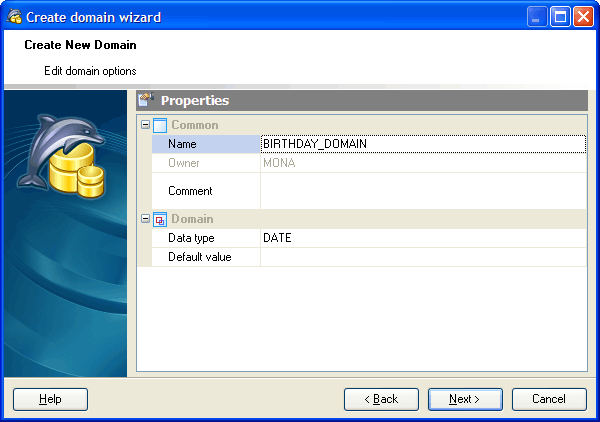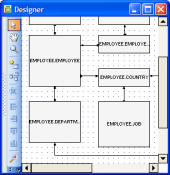MaxDB Maestro online Help
| Prev | Return to chapter overview | Next |
Create Domain Wizard
New Domains are created within Create Domain Wizard. In order to run the wizard you should either
| • | select the Object | Create Database Object... main menu item; |
| • | select the Domain icon in the Create Database Object dialog |
or
| • | select the Domains list or any object from that list in the explorer tree; |
| • | select the Create New Domain... item from the popup menu |
or
| • | open and the Domains tab there; |
| • | press the Insert key or select the Create New Domain item from the popup menu (alternatively, you may use the corresponding link of the Navigation Bar). |
To create a new Domain with the same properties as one of the existing Domains has:
| • | select the Object | Duplicate Database Object... main menu item; |
| • | follow the instructions of Duplicate Object Wizard. |
The basic principles of Create Object Wizards in MaxDB Maestro are covered by the corresponding topic. See below to find the description of wizard steps that are unique to the current object.
Specify the properties for the new Domain according to your needs. The detailed description is given below.

Name
Specify a name for the domain.
Owner
Select the owner of the Domain from the drop-down list. By default, only the owner of an object can perform various operations with the object. In order to allow other users to operate it, privileges must be granted. (However, users that have the superuser attribute can always access any object.)
Comment
Supply a comment to the Domain if necessary.
Data Type
Select the underlying data type for the Domain. This may include array specifiers.
Code
A code attribute defines the sort sequence to be used for comparing field values. There are four types code attributes:
| • | No code attribute |
The column values have the code attribute defined in the database system.
| • | ASCII |
The column values are stored in ASCII code.
| • | BYTE |
The column values are stored in a code, that is, the column values are not converted by the database system.
| • | UNICODE |
The application data in a table column is stored in UNICODE.
 Not Null
Not Null
The checkbox indicates that the values of the Domain are not allowed to be null.
Check
Creates a single CHECK constraint for the domain (Check constraint can be like VALUE <operator> value or VALUE [NOT] BETWEEN value AND value, etc.).
Default Value
The field is used to specify a default value for the columns of the domain data type. The field value may contain any variable-free expression (however, subqueries are not allowed). The data type of the default expression must match the data type of the domain. If no default value is specified then the default value is the null value.
| Prev | Return to chapter overview | Next |




 Download
Download Buy
Buy
